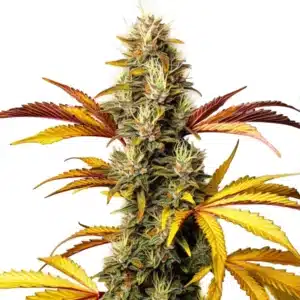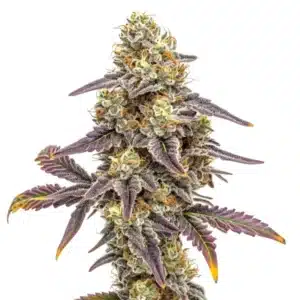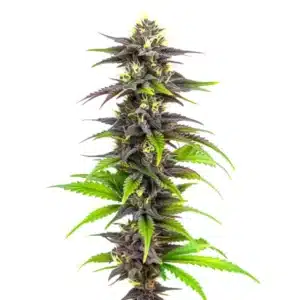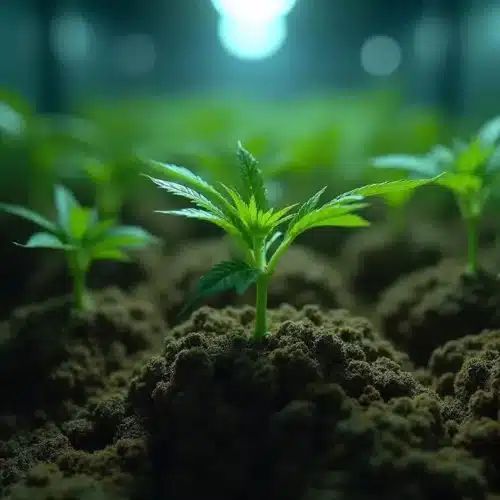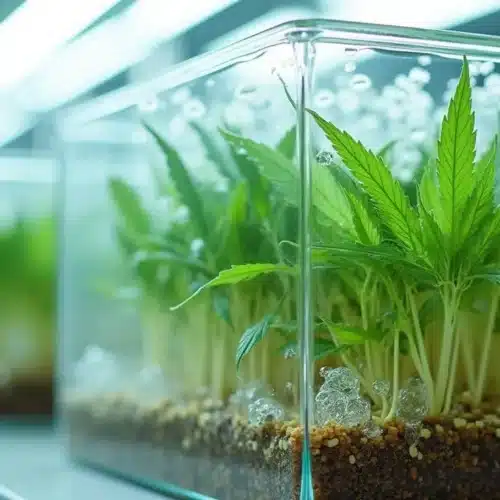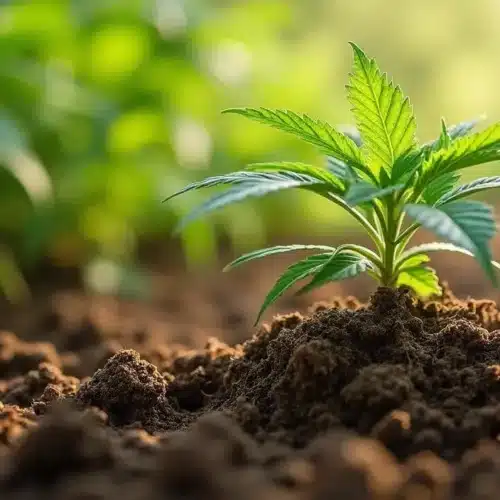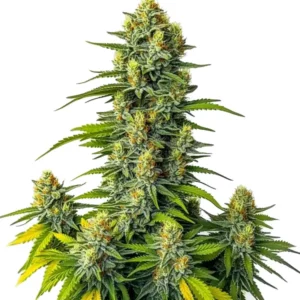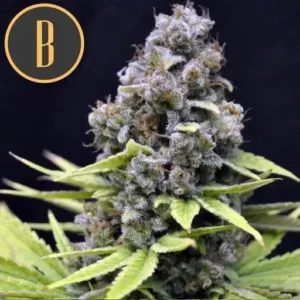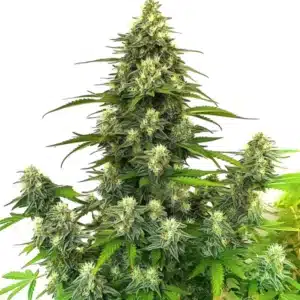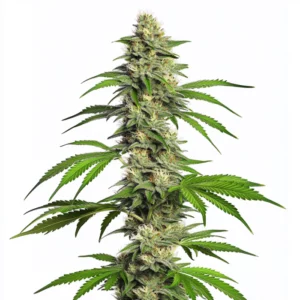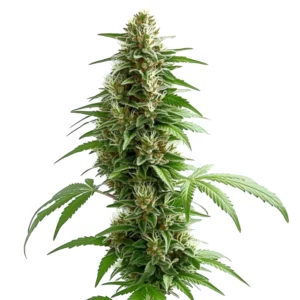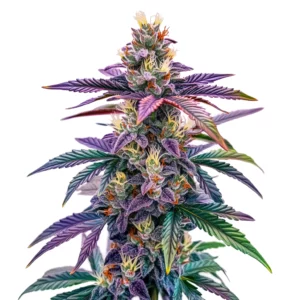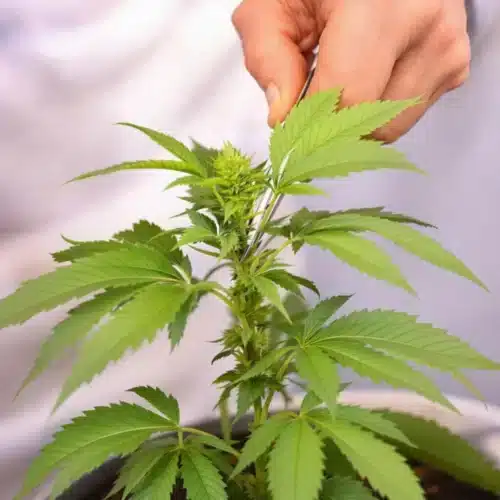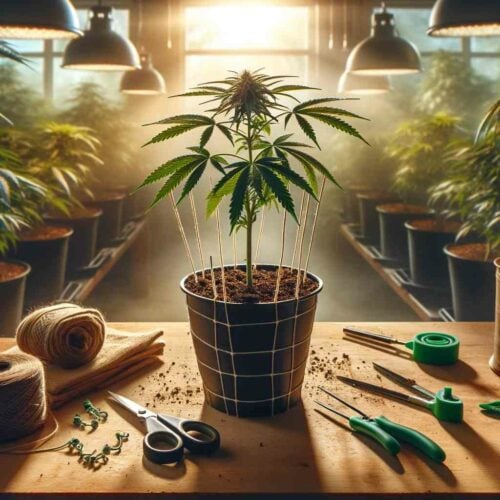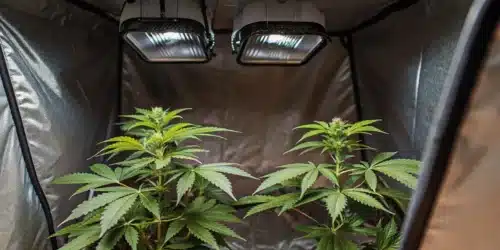Autoflowering cannabis plants have gained significant popularity among growers due to their ability to flower automatically regardless of light cycles. Unlike photoperiod strains that require specific light schedules to trigger flowering, autoflowers grow quickly and flower without needing strict light management. However, light intensity still plays a major role in determining the overall health and yield of these plants.
For growers, the challenge is to provide the right light intensity without overexposing the plants to harsh conditions that could hinder their growth. Knowing how light intensity affects photosynthesis, the plant’s energy production process, is crucial for success. Essentially, photosynthesis converts light energy into the sugars that the plant uses to grow, and a well-balanced light intensity ensures that this process runs optimally without overwhelming the plant.
In this article, we will explore how the right light intensity impacts autoflower growth, how to measure it accurately, and what light requirements are ideal for different stages of the plant’s lifecycle. The aim is to help growers maintain a perfect balance of light intensity, leading to healthier plants and increased yields.
The Basics of Light Intensity for Autoflowers
Light intensity refers to the amount of light energy that reaches your plants. This is typically measured in lumens, PAR (Photosynthetically Active Radiation), or PPFD (Photosynthetic Photon Flux Density). For cannabis plants, the goal is to provide the optimal amount of light energy for photosynthesis, without overwhelming the plant or causing damage like light burn. This balance is especially important for autoflowers, which are fast-growing and sensitive to environmental changes.
Light burn, which occurs when plants receive too much light, can damage leaves and reduce the overall efficiency of photosynthesis. Conversely, insufficient light can limit the energy available for growth, resulting in weaker plants and lower yields. The key is to find the sweet spot where your plants are receiving enough light to fuel their growth but not so much that it becomes a stressor. Monitoring your light levels regularly is essential to ensure that your autoflowers are in the optimal range.
Autoflowering cannabis strains are more resilient and adaptable than traditional photoperiod plants, but they still require specific levels of light intensity to thrive. Too little light can stunt their growth, while too much can stress the plant. Many growers prefer LEDs due to their flexibility in adjusting intensity, but any light source can be used effectively if managed well. As we dive deeper into light intensity, you’ll see how each stage of growth benefits from different levels of light and how to apply this knowledge for your autoflowers’ success.
Recommended Light Intensity Levels for Autoflowers
The right light intensity varies based on the growth stage of the plant. Generally, the following intensity ranges are recommended for autoflowers:
- Seedling Stage: 200-400 PPFD.
- Vegetative Stage: 400-600 PPFD.
- Flowering Stage: 600-900 PPFD.
These ranges allow for healthy development without overwhelming the plants. Light intensity is not only about providing energy but also mimicking the natural outdoor environment where cannabis thrives. Indoor growers must take extra care in replicating this environment to ensure proper development. Autoflowers have a shorter lifecycle, so each phase of light intensity must be fine-tuned for optimal growth in the limited time available.
In the early stages, it’s important to start with lower light intensity, especially when seedlings are small and delicate. As the plant progresses into the vegetative stage, a steady increase in intensity helps build strong roots, stems, and leaves. Finally, during flowering, higher light intensity boosts the energy needed for bud production, resulting in denser and more resinous flowers. By understanding these distinct requirements, growers can maximize yields and produce top-quality cannabis from their autoflowers.
Promos & Deals
Seedling Stage
During the seedling stage, autoflowers are incredibly delicate. They do not need high-intensity light, as their main focus is developing roots and initial leaves. Light intensity during this period should be kept between 200-400 PPFD. If the light is too intense at this stage, the seedlings may become stressed, leading to slow growth or even failure to thrive.
The seedling stage typically lasts for the first two weeks of the plant’s life. During this period, it’s essential to keep the light intensity on the lower end of the spectrum. The roots are still developing, and too much light can lead to unnecessary stress. Soft lighting encourages the seedlings to stretch slightly towards the light, helping them establish a strong foundation. Growers should also keep an eye on the humidity and temperature during this stage, as young plants are sensitive to environmental factors.
Some growers use LED lights at a safe distance to maintain the lower intensity levels required by seedlings. A lux meter can help measure and adjust the distance of lights to ensure the plants are receiving the appropriate light intensity. If you’re using higher intensity lights, such as HPS or MH bulbs, be sure to start with them raised higher above the plants and gradually lower them as the plants grow stronger.
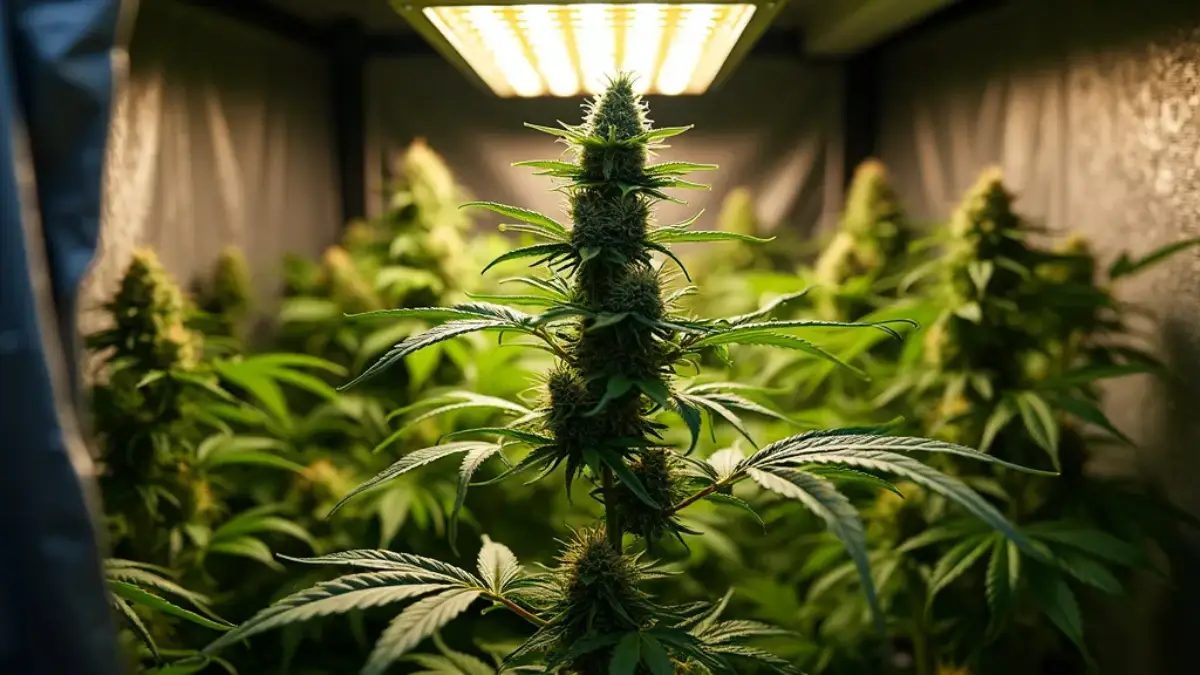
Vegetative Stage
As autoflowers enter the vegetative stage, their energy needs increase, requiring more light to fuel growth. The ideal range during this phase is 400-600 PPFD. Light at this intensity promotes healthy foliage and robust structural development, allowing the plant to prepare for flowering.
This stage typically lasts for about two to four weeks, depending on the strain and growing conditions. During the vegetative stage, autoflowers focus on building a solid structure—strong stems, branches, and leaves—that will support the buds during the flowering stage. Providing enough light ensures that the plant can efficiently photosynthesize and convert energy into growth. The more robust the plant at this stage, the better its chances of producing a high yield during flowering.
During this stage, the use of a quality LED or HID light positioned at the correct height is essential. Regularly measuring light intensity can prevent overstressing the plant, which is especially important for autoflowers, as they have a limited vegetative phase compared to photoperiod plants. Growers should also monitor the plant’s response to the light. If leaves appear to be stretching or growing too tall, it may indicate that they are not receiving enough light and adjustments are needed.
Flowering Stage
Flowering is the most critical phase for maximizing yield, and light intensity should be increased to 600-900 PPFD. The goal during flowering is to promote dense, resinous buds, which require more energy to develop. Ensuring proper light intensity at this stage can significantly impact the quality and quantity of the final harvest.
Autoflowers enter the flowering stage automatically, typically around week 4 to 6, regardless of the light cycle. During this phase, the plant focuses all its energy on bud production. Higher light intensity helps to produce bigger, more resinous buds, which is what most growers aim for. A great example is Mamba Negra Auto, an autoflowering strain known for its compact size and impressive resin production. However, it’s essential to monitor the plants carefully to avoid light burn, especially if you’re using high-powered lights like HPS or LED panels.
While more light is beneficial during flowering, it’s essential to avoid overdoing it. Excessive light can lead to issues such as foxtailing, where the buds stretch unnaturally, or even light burn, which damages the leaves and reduces overall yield. Some growers prefer to gradually increase the light intensity as the plant transitions into flowering to prevent shocking the plant, ensuring that it has time to adjust to the increased energy intake.
Monitoring Light Intensity with a Lux Meter
Accurately measuring and maintaining the appropriate light intensity is key to achieving optimal results with autoflowers. One of the simplest ways to do this is by using a lux meter.
A lux meter measures the amount of light that reaches your plants and allows you to adjust your lights to provide the correct intensity at each growth stage. However, it’s important to note that lux meters measure lumens, which represent the light intensity as perceived by the human eye. For plant growth, lumens are not as accurate as PAR or PPFD meters, but they can still be a helpful tool for home growers.
Lux meters are more affordable and accessible than PPFD meters, making them a popular choice for small-scale growers. When using a lux meter, it’s important to remember that different light sources produce different types of light. For example, LED lights are often more efficient in converting electricity into light usable by plants than traditional HPS lights, which can affect your lux readings. Therefore, it’s a good idea to cross-reference your lux meter readings with general guidelines for your specific grow light.
Using a Lux Meter for Autoflowers
To use a lux meter effectively:
- Position the Meter: Place the lux meter at the canopy level of your plants. This ensures that the measurement reflects the actual light intensity your plants are receiving. Always take multiple readings across the grow area to ensure consistency.
- Check for Uniform Light Distribution: Measure the intensity in different parts of your grow area to ensure that light is evenly distributed. Autoflowers do best when the light is consistent across the entire canopy. Uneven light distribution can lead to underdeveloped buds in certain areas of the plant.
- Adjust Light Height: If your measurements show that the light intensity is too high or too low, adjust the height of your lights accordingly. Many LED grow lights come with adjustable hangers, making it easy to fine-tune the distance from your plants. Be cautious when lowering lights to avoid hot spots where light intensity can spike, causing potential damage.
While a lux meter provides a rough estimate, for more precise measurements, a PAR meter or a PPFD meter is recommended. These meters are specifically designed to measure the light that plants use for photosynthesis, giving you a more accurate reading of the light’s impact on your plants.
Choosing the Right Grow Lights for Autoflowers
The type of grow light you choose plays a significant role in achieving optimal light intensity. Here are the most common types of grow lights and their effectiveness with autoflowers:
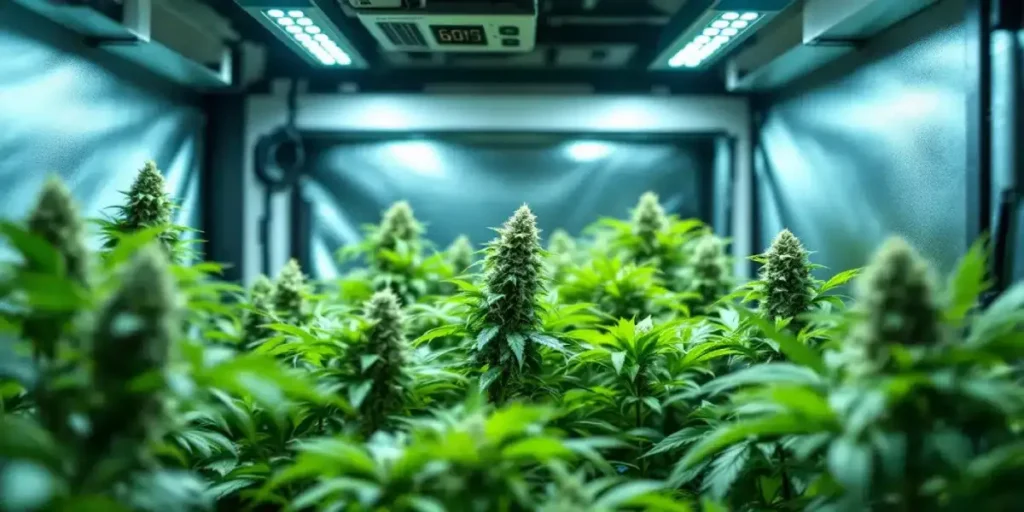
LED Grow Lights
LEDs are increasingly popular among cannabis growers due to their energy efficiency and customizable light spectrum. They can be adjusted to provide the right intensity at each stage of growth, making them a great option for autoflowers. High-quality LED lights also produce less heat, reducing the risk of heat stress or light burn.
Another advantage of LEDs is their longevity. These lights tend to last longer than traditional bulbs, making them a cost-effective choice in the long run. Additionally, many modern LED grow lights allow for spectrum customization, meaning you can tailor the light to the specific needs of your plants during different growth stages. This ability to adjust the light spectrum and intensity is particularly beneficial since the plants transition quickly through their life stages.
HID Grow Lights
HID lights, such as Metal Halide (MH) and High-Pressure Sodium (HPS) lights, have been a staple in cannabis cultivation for years. They provide intense light, which can be beneficial during the flowering stage. However, HID lights generate a significant amount of heat, requiring additional cooling solutions to maintain a safe environment for autoflowers.
While HID lights are effective, their higher power consumption and heat output can be problematic, especially in small grow spaces. Growers using HID lights should ensure proper ventilation and cooling systems to prevent heat stress on the plants. Despite these challenges, HPS lights, in particular, are known for their ability to produce dense, high-quality buds during the flowering phase.
CFL Grow Lights
Compact fluorescent lights (CFLs) are typically used for seedlings and early vegetative stages because they provide low-intensity light. CFLs are not ideal for the flowering stage, as they lack the intensity needed to promote heavy bud development.
CFLs are a good option for growers on a tight budget or those with very small grow spaces. However, their limitations in terms of intensity and light spectrum make them less suitable for serious growers aiming for high yields. If you plan to use CFLs, they work best when combined with other types of lighting, such as LEDs or HIDs, for more comprehensive coverage throughout the plant’s lifecycle.
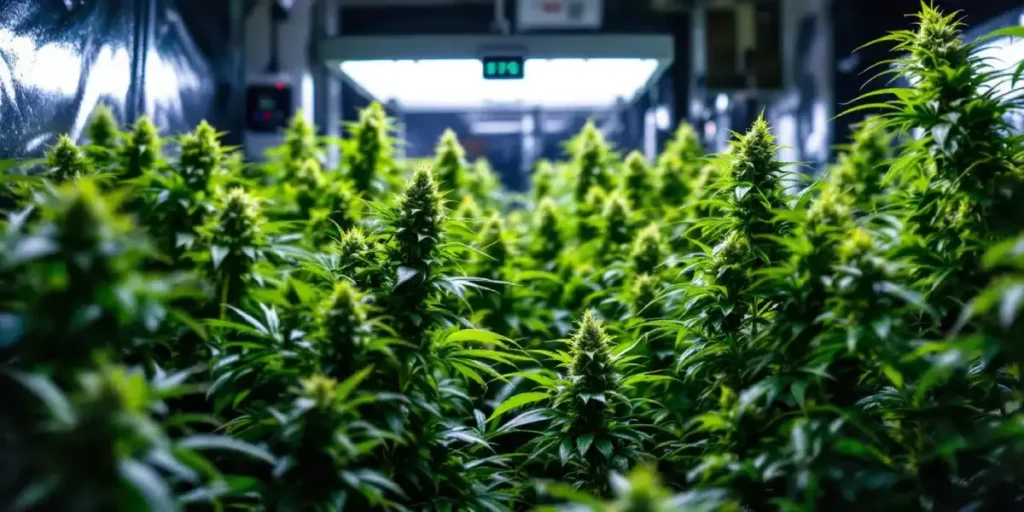
FAQs About Autoflower Light Intensity
How do I know if my autoflowers are getting too much light?
Signs that your autoflowers are receiving too much light include yellowing or bleaching of the leaves, curling of the leaf edges, and slow or stunted growth. Additionally, you may notice that the leaves develop brown spots or become dry and brittle. If you observe these symptoms, it is crucial to reduce the light intensity by either raising your lights or dimming them if possible. Over time, plants exposed to too much light will start showing these signs across multiple areas of the plant, especially in the areas closest to the light source.
Monitoring your plant’s overall health is the best way to prevent light stress. Autoflowers grow quickly, so any problems related to light intensity can manifest within a few days. Keeping an eye on the color and texture of the leaves, as well as overall plant posture, can help you spot problems before they escalate. Always ensure that you are providing the optimal light intensity for the stage of growth and make incremental adjustments as needed.
Can autoflowers handle 24 hours of light?
Yes, autoflowers can handle 24 hours of light, especially during the vegetative stage. Some growers use this technique to maximize growth since autoflowers do not rely on light cycles to trigger flowering. However, many growers prefer an 18/6 light cycle (18 hours of light, 6 hours of darkness) to give the plants some rest time. Providing a dark period allows the plant to undergo processes that may lead to healthier growth and stronger root systems, which can positively affect yields.
In practical terms, giving your autoflowers some rest in the form of a dark period can lead to more vigorous growth in the long run. While it may seem counterintuitive to reduce the light exposure for a plant that doesn’t require it to flower, many experienced growers report better results with an 18/6 cycle. This also helps mimic natural conditions, as plants in the wild are not exposed to constant light.
Is there a difference in light intensity requirements for indoor and outdoor autoflowers?
Yes, outdoor autoflowers typically receive more intense light from the sun than indoor plants under artificial lights. The sun provides a full spectrum of light that fluctuates in intensity throughout the day, which is difficult to replicate with indoor grow lights. Indoor growers need to account for this difference and ensure they are providing sufficient light intensity, especially during the flowering stage when autoflowers require more energy to produce buds.
When growing indoors, it’s important to mimic the sun’s intensity as closely as possible, especially during the flowering stage. Using light meters and adjusting the distance of grow lights from the canopy can help you achieve the desired light intensity. Outdoors, nature tends to regulate the light exposure, though growers can still assist by positioning plants in areas that receive full sunlight for most of the day.
Should I increase light intensity as my autoflowers mature?
Yes, increasing light intensity as your autoflowers transition from the seedling to flowering stages will support their growth and yield potential. Autoflowers grow rapidly and need higher light intensity during the vegetative and flowering phases to maximize photosynthesis. However, it’s essential to be cautious when increasing intensity, as too much light can lead to stress and reduced yields. Gradually increase the light intensity as the plant matures, making sure to monitor for any signs of light stress along the way.
When increasing light intensity, be sure to take into account factors like temperature and humidity, which can also affect how plants respond to light. Keeping the environment balanced while increasing light intensity will ensure that your plants stay healthy and productive throughout their life cycle.


